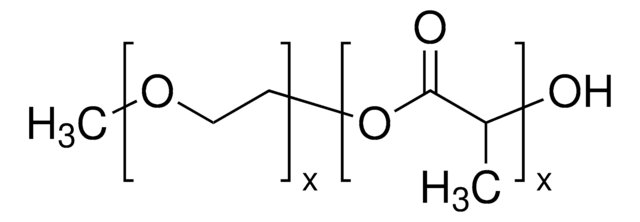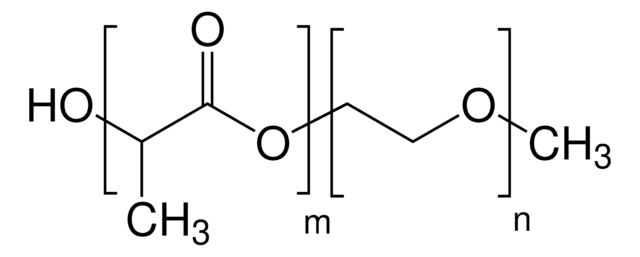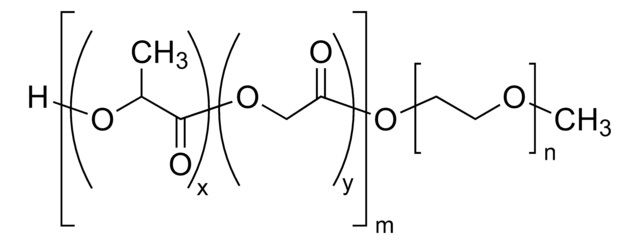659630
Polylactide-block-poly(ethylene glycol)-block-polylactide
PLA average Mn 1,500, PEG average Mn 900
Synonym(s):
PLA-PEG-PLA
About This Item
Recommended Products
form
solid
Quality Level
mol wt
PEG average Mn 900
PLA average Mn 1,500
average Mn (1,500-900-1,500)
degradation timeframe
<12 months
transition temp
Tm 278.5 °C
Tg 7-9 °C
PDI
<1.2
Looking for similar products? Visit Product Comparison Guide
Related Categories
Application
Features and Benefits
Storage Class
11 - Combustible Solids
wgk_germany
WGK 3
flash_point_f
Not applicable
flash_point_c
Not applicable
ppe
Eyeshields, Gloves, type N95 (US)
Choose from one of the most recent versions:
Already Own This Product?
Find documentation for the products that you have recently purchased in the Document Library.
Customers Also Viewed
Articles
Interest in utilizing biodegradable polymers for biomedical applications has grown since the 1960s.
Microparticle drug delivery systems have been extensively researched and applied to a wide variety of pharmaceutical and medical applications due to a number of advantages including injectability, local applicability to target tissues and sites, and controlled drug delivery over a given time period.
Aliphatic polyesters such as polylactide, poly(lactide-co-glycolide) and polycaprolactone, as well as their copolymers, represent a diverse family of synthetic biodegradable polymers that have been widely explored for medical uses and are commercially available.
Aliphatic polyesters such as polylactide, poly(lactide-co-glycolide) and polycaprolactone, as well as their copolymers, represent a diverse family of synthetic biodegradable polymers that have been widely explored for medical uses and are commercially available.
Our team of scientists has experience in all areas of research including Life Science, Material Science, Chemical Synthesis, Chromatography, Analytical and many others.
Contact Technical Service








